SCERT Assam Class 8 Social Science Chapter 18 – “The Establishment, Expansion and Consolidation of British Rule in India” Summary & Solutions
SCERT Assam Class 8 Social Science (English Medium) Chapter 18 – “The Establishment, Expansion and Consolidation of British Rule in India” solutions are now available at Ospin Academy. We provide SCERT-based textbook solutions, multiple-choice questions (MCQs), and a complete chapter summary to help students with their exam preparation.
📖 Chapter Overview:
This chapter explains how the British East India Company established its control over India and expanded its influence through military and political strategies.
- British Conquest: Battle of Plassey (1757) and Battle of Buxar (1764).
- Political Strategies: Doctrine of Lapse, Subsidiary Alliance, and Divide and Rule policy.
- Impact on India: Economic exploitation, changes in administration, and Indian resistance movements.
📌 Key Topics Covered:
- How did the British establish their rule in India?
- What were the effects of the Battle of Plassey and Buxar?
- What was the Doctrine of Lapse and Subsidiary Alliance?
- How did British rule impact the Indian economy and society?
📝 How Ospin Academy Helps:
- Complete Solutions: SCERT Assam Class 8 Social Science Chapter 18 answers.
- MCQs & Extra Questions: Useful for exams and self-assessment.
- Easy Explanations: Concept clarity with simple language.
- Quick Revision Notes: Key points for last-minute preparation.
SCERT Assam Class 8 Social Science (English Medium) Chapter 18 – “The Establishment, Expansion and Consolidation of British Rule in India” solutions are available at Ospin Academy. Access full notes now!
Class 8 Social Science (English Medium) PDF Solutions 2025-26 | SCERT Assam
Download Class 8 Social Science (English Medium) PDF with chapter-wise MCQs, textbook answers, and extra questions for SCERT Assam 2025-26.
Class 18 Social Science
Chapter – 6 Ospin Academy
The Establishment, Expansion and Consolidation of British Rule in India
|
Exercise |
|---|
Answer the following questions:
(a) What is the competition between the British and the French?
Ans: The English and French competed for control of trade routes and resources, such as wool, wine, and spices. This economic rivalry was a major source of tension, and led to various trade wars and embargoes. Cultural differences also played a role in the competition between England and France.
(b) Who was the French governor during the time of the first and the second Carnatic Wars?
Ans: Joseph François DupleixJoseph François Dupleix was the French governor during the time of the first and second carnatic wars.
(c) Who was the chief commander of Siraj-Ud-Daullah?
Ans: Mir Zafar.
(d) Who was the first Governor General of Bengal?
Ans: Warren Hastings.
(e) Who introduced the Doctrine of Lapse?
Ans: Lord Dalhousie.
2. Choose the Correct Answer.
(a) Pondicherry was the trading hub of the British.
Ans: False.
(b) The French made Salabat Jung the nizam of Hyderabad
Ans: True.
(c) Siraj-Ud-Daullah was the son of Alivardi Khan’s eldest daughter.
Ans: True.
(d) Plassey was situated near the river Bhagirathi.
Ans: True.
(e) The Regulating Act promoted the Governor Governor General. Bengal to Governor General.
Ans: True.
(f) Lord Wellesley had introduced the Doctrine of Lapse.
Ans: True.
3. Arrange in sequence:
(i) Siraj-Ud-Daullah.
Ans: Siraj-Ud-Daullah (1733-1757): He succeeded Alivardi Khan as the Nawab of Bengal in 1756 and ruled until 1757.
(ii) Mir Zafar.
Ans: Mir Jafar (1691-1765): He was the commander-in-chief of the Nawab’s army under Siraj-Ud-Daullah. After the Battle of Plassey in 1757, Mir Jafar became the puppet Nawab of Bengal under British influence.
(iii) Alivardi Khan.
Ans: Alivardi Khan (1671-1756): He was the Nawab of Bengal from 1740 to 1756. He was the predecessor of Siraj-Ud-Daullah.
4. Give Short Answers:
(a) The first Carnatic War.
Ans: The first Carnatic War began in 1746 and would last until 1748. This conflict was caused by the death of the Nawab of Arcot, who was a key ally of the British East India Company. The death of the Nawab led to a power struggle between his two sons, Muhammed Ali and Dost Ali.
(b) Dupleix.
Ans: Dupleix was made the Governor General of all French territorial holdings in India in 1742. He dreamt of establishing a French colonial empire in India, and to that end, he started to make alliances with many local rulers. Hyder Ali, the ruler of Mysore was trained in the army by Dupleix.
(c) The Battle of Plassey.
Ans: The Battle of Plassey was fought in north-eastern India on 23 June 1757. Troops of the British East India Company, led by Robert Clive, came up against the forces of Siraj-ud-Daulah, the last Nawab of Bengal, and his French allies.
(d) Regulating Act.
Ans: To make the rule of the East India Company more secure, the British parliament had passed a law called the Regulating act. Under this Act, the post of the Governor of Bengal was upgraded to Governor General. Atour member committee was also formed to assist the Governor General in his work. The governors of Madras and Bombay were brought under the authority of the Governor General of Bengal.
The Regulating Act Itad constitutional penvers. Under this Act, the political activities of the East India Company were recognized by the British parliament. This Act also marked the permanent rule of the British in India. However, this Act did not ment on the limitation of the power of the Governor General and so could not be implemented successfully
(e) Pit’s India Act.
Ans: Pit’s india Act after the british prime minister william pits the younger . it was passed in august 1784. Under thus Act a six members controlling committee was formed in india to after the company activities and the four members committee of governors of bengal was lowed to lowed three.This act increased the power of the general governors and brought India under general governors .pits india Act actually founded british imperial in India.
(f) Permanent Settlement.
Ans: The Permanent Settlement was brought into effect by the Lord Cornwallis in 1793. This was an agreement between the East India Company and the zamindars to fix the land revenue. This settlement was made with the zamindars of Bengal, Bihar, and Orissa.
5. The internal discord of Bengal was the main reason for British occupation of Bengal’. How true is this statement?
Ans: (i) Strategic Military Considerations: The British were not only interested in Bengal’s wealth but also in its strategic location and ports, which could enhance their trade and military capabilities in the region.
(ii) European Rivalries: The geopolitical context of the time involved competition among European powers, including the French and Dutch, for dominance in the Indian subcontinent. British expansion in Bengal was partly driven by the desire to outmanoeuvre their rivals.
(iii) Military Confrontation: The Battle of Plassey in 1757, where the British, under Robert Clive, defeated Siraj-ud- Daulah’s forces with the support of dissident Bengal nobles, was a crucial turning point. This military victory allowed the British to establish themselves as the dominant power in Bengal.
6. Which activities of the East India Company had angered Siraj Ud Daullah?
Ans: The British were plotting a conspiracy with some of Siraj-ud-Daulah’s court members to oust the Nawab. This allegation angered Siraj-ud-Daulah, who also blamed the British for the following: Gross abuse of trade privileges that were given to them by Mughal rulers.
7. Discuss the actions of the East India Company that reflected their imperialistic designs.
Ans: The actions of the East India Company that reflected their imperialistic designs are mentioned below:
(i) Political Control:
(a) Treaties and Alliances: The EIC used treaties and alliances with Indian rulers to extend its influence. These agreements often placed Indian states under Company control in exchange for protection or financial support.
(b) Administrative Control: After the 1757 victory at Plassey, the EIC started to assume administrative control, especially in Bengal. The Regulating Act of 1773 and the India Act of 1784 further formalised its political power, making the Company a quasi-governmental authority.
(ii) Economic Policies:
(a) Taxation and Revenue Collection: The EIC imposed heavy taxes on Indian peasants and landowners, leading to widespread poverty and famine. The Permanent Settlement of Bengal in 1793, for instance, aimed to maximise revenue collection but had devastating effects on local farmers.
(b) Commercial Policies: The Company imposed restrictive commercial policies that favoured British products and industries. This led to the deindustrialization of traditional Indian crafts and industries, particularly the textile industry
8. Make a list of the kingdoms that Lord Dalhousie had annexed under the Doctrine of Lapse.
Ans: The list of the kingdoms Lord Dalhousie had annexed under the Doctrine of lapse are mentioned below:
(i) Satara (1848).
(ii) Jaitpur, Sambalpur (1849).
(iii) Baghat (1850).
(iv) Udaipur (Chhattisgarh State) (1852).
(v) Jhansi (1854), Nagpur (1854).
(iv) Tanjore and Arcot (1855).
9. Draw a map of India and plot the places given below:
(i) Pondicherry.
Ans:
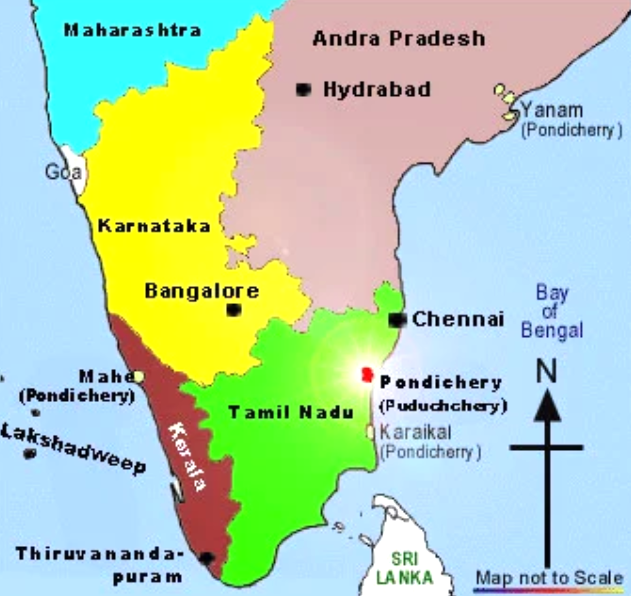
(ii) Madras.
Ans:
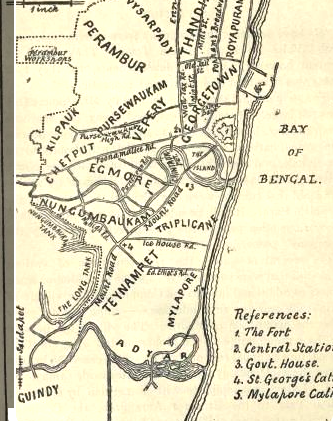
(iii) Bombay.
Ans:
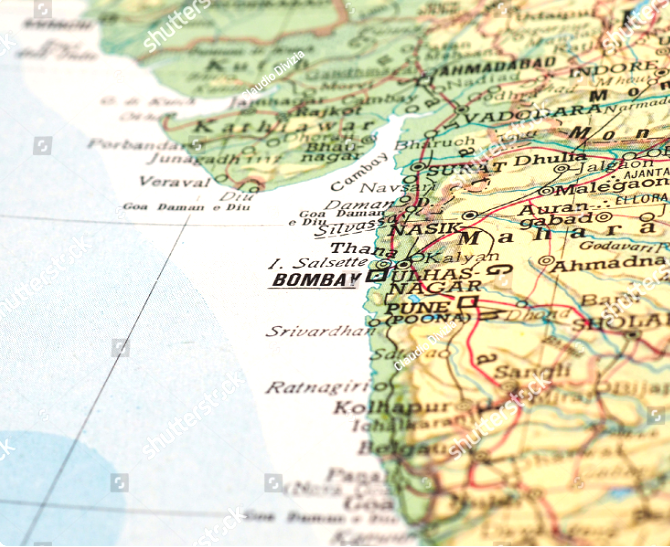
(iv) Allahabad.
Ans:
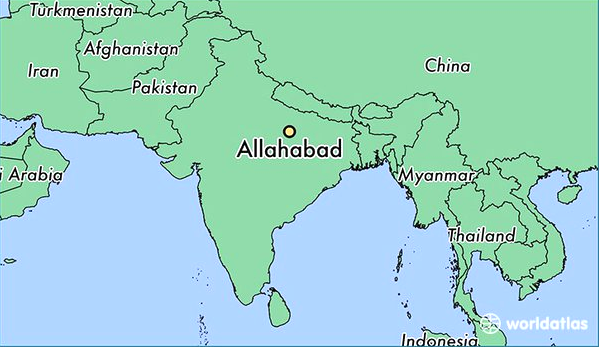
(v) Ayodhya.
Ans:
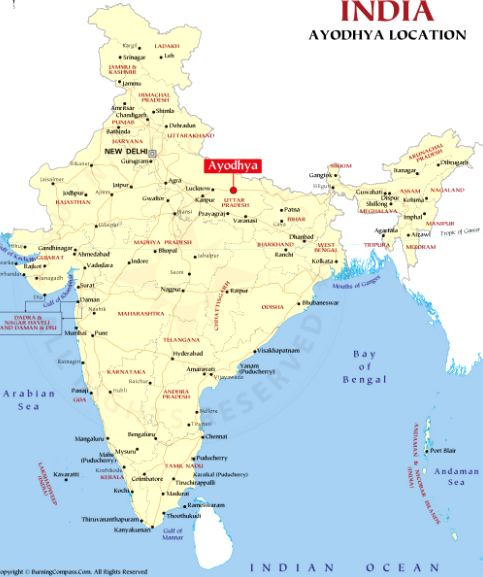
(vi) Plassey.
Ans:
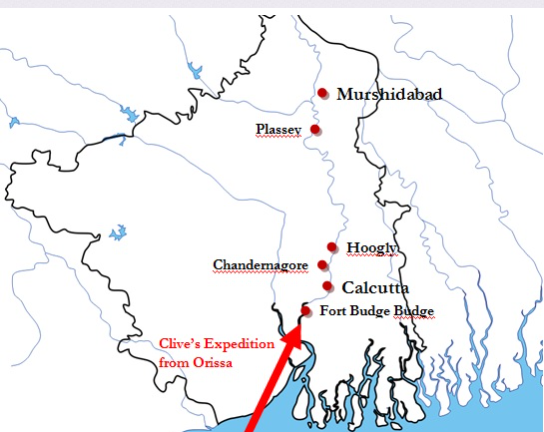
(vii) Karnataka.
Ans:
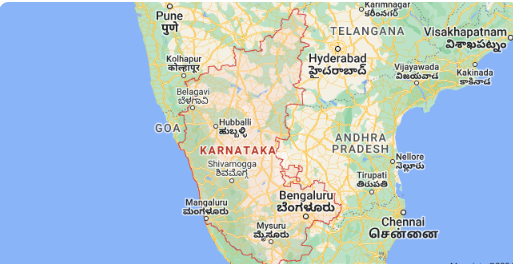
10. With the help of your teacher, find out Austria, England, France, Germany, etc. in a map of Europe.
Ans: Do yourself .
SCERT Assam Class 8 Social Science Chapter 18 – British Rule in India FAQs
Get Free NCERT PDFs
If you want to download free PDFs of any chapter, click the link below and join our WhatsApp group:

